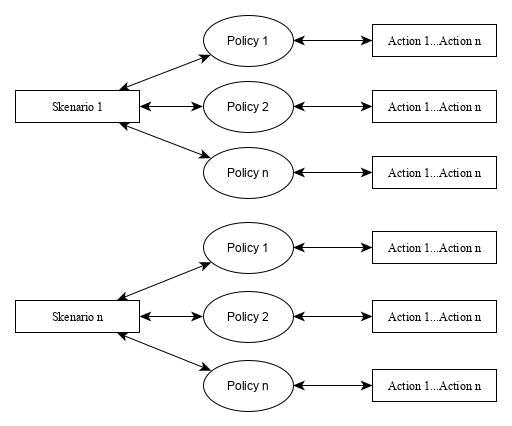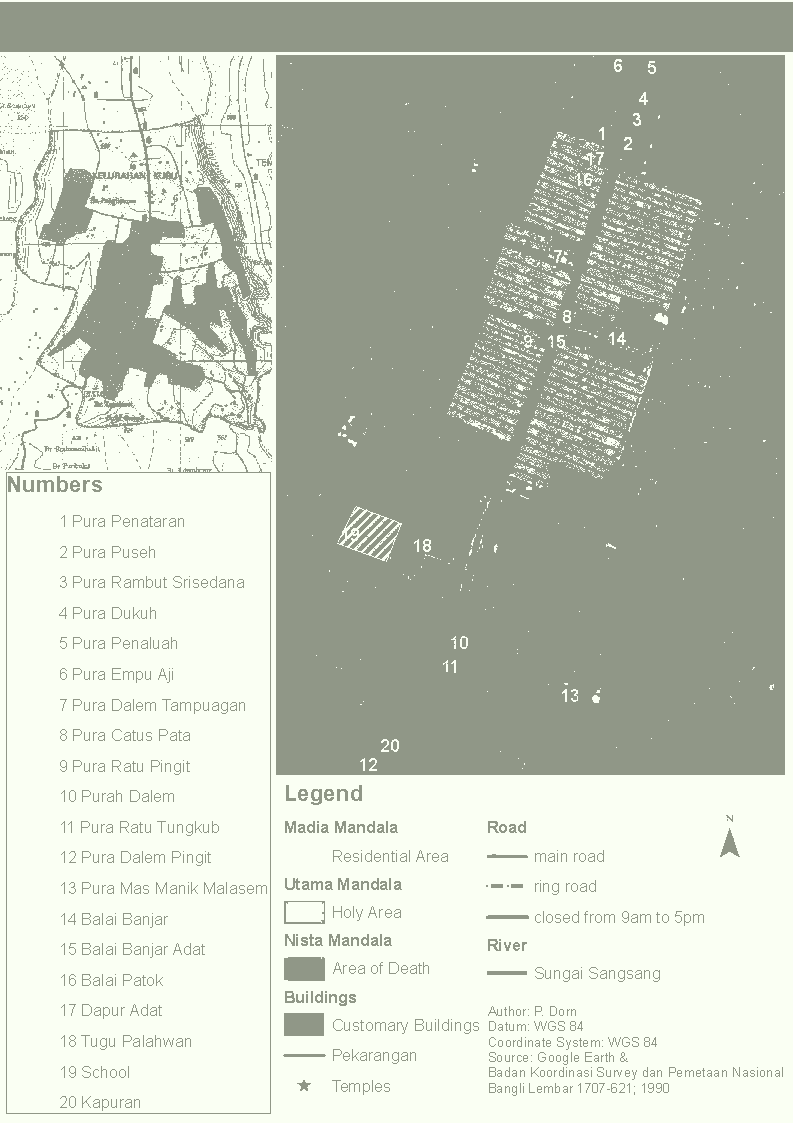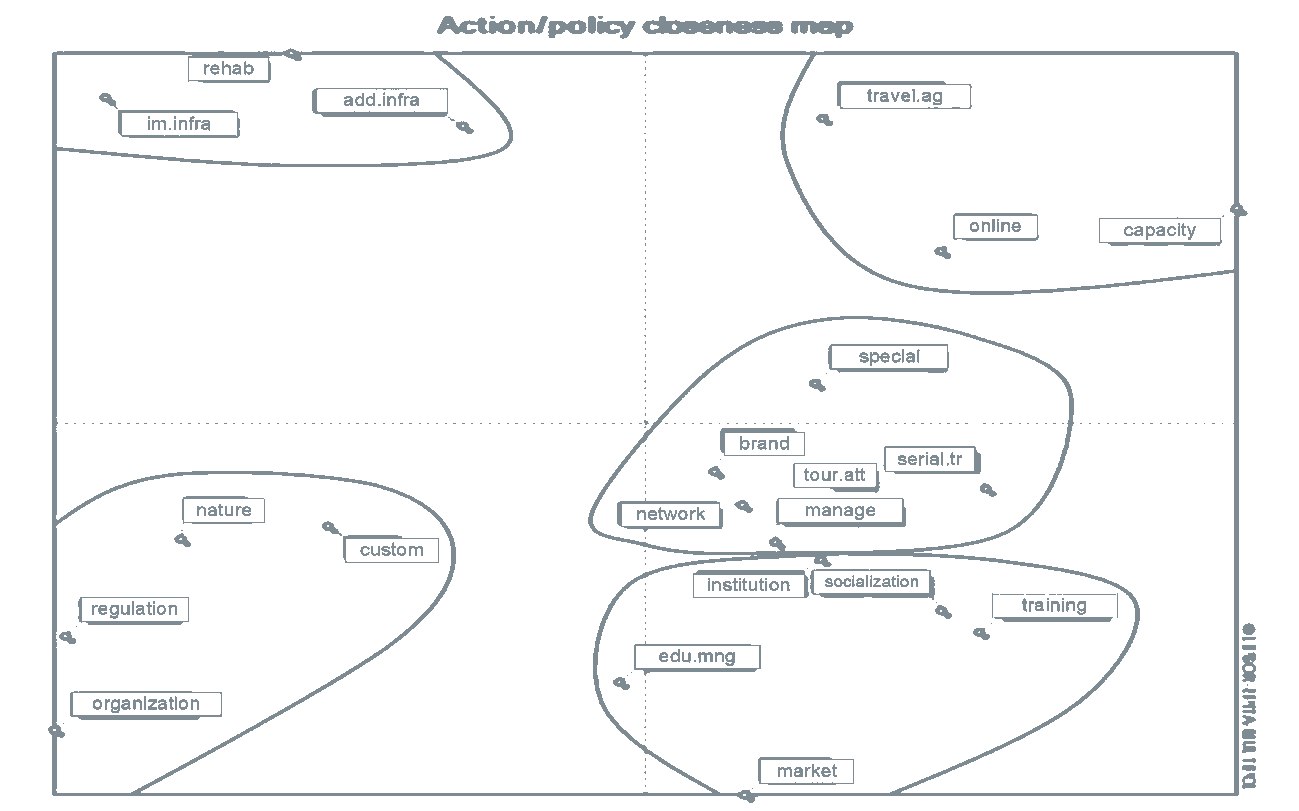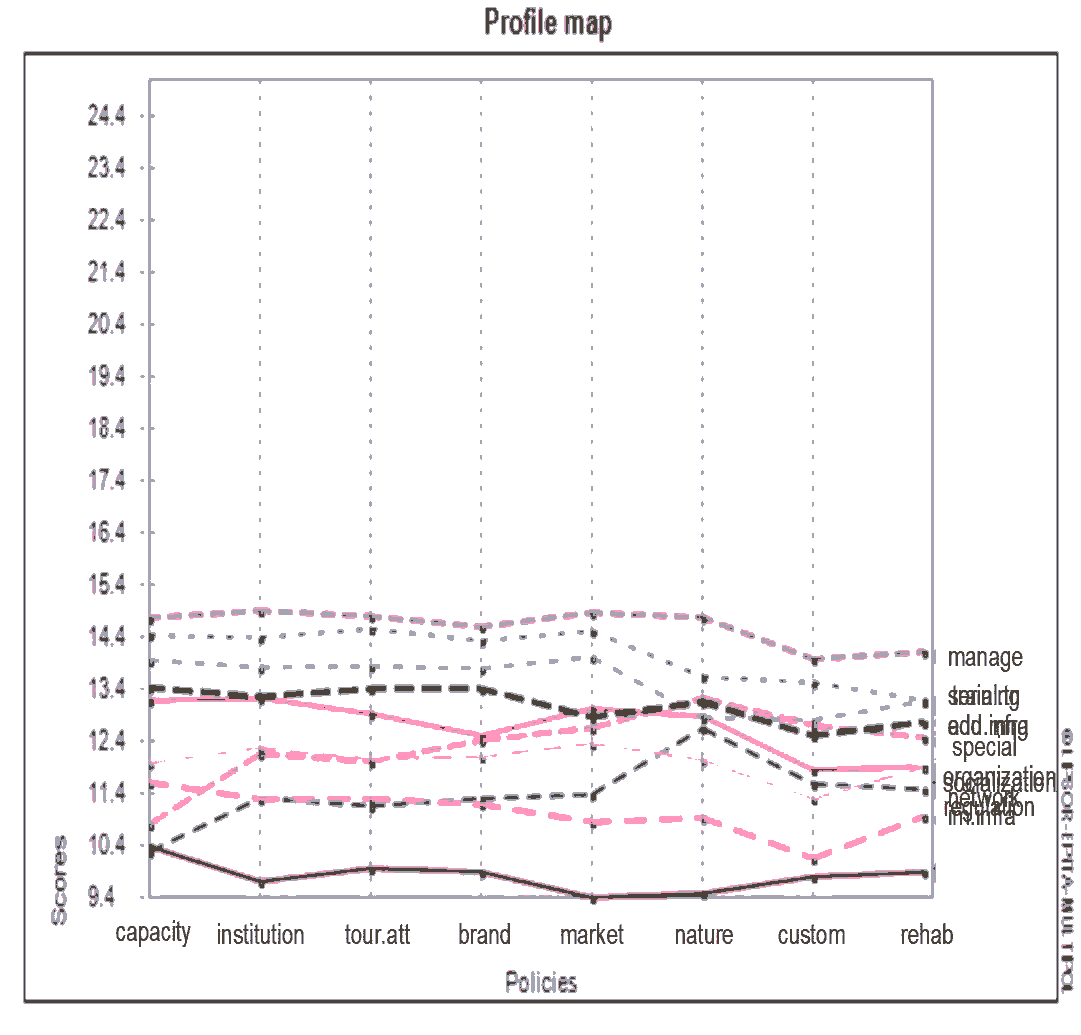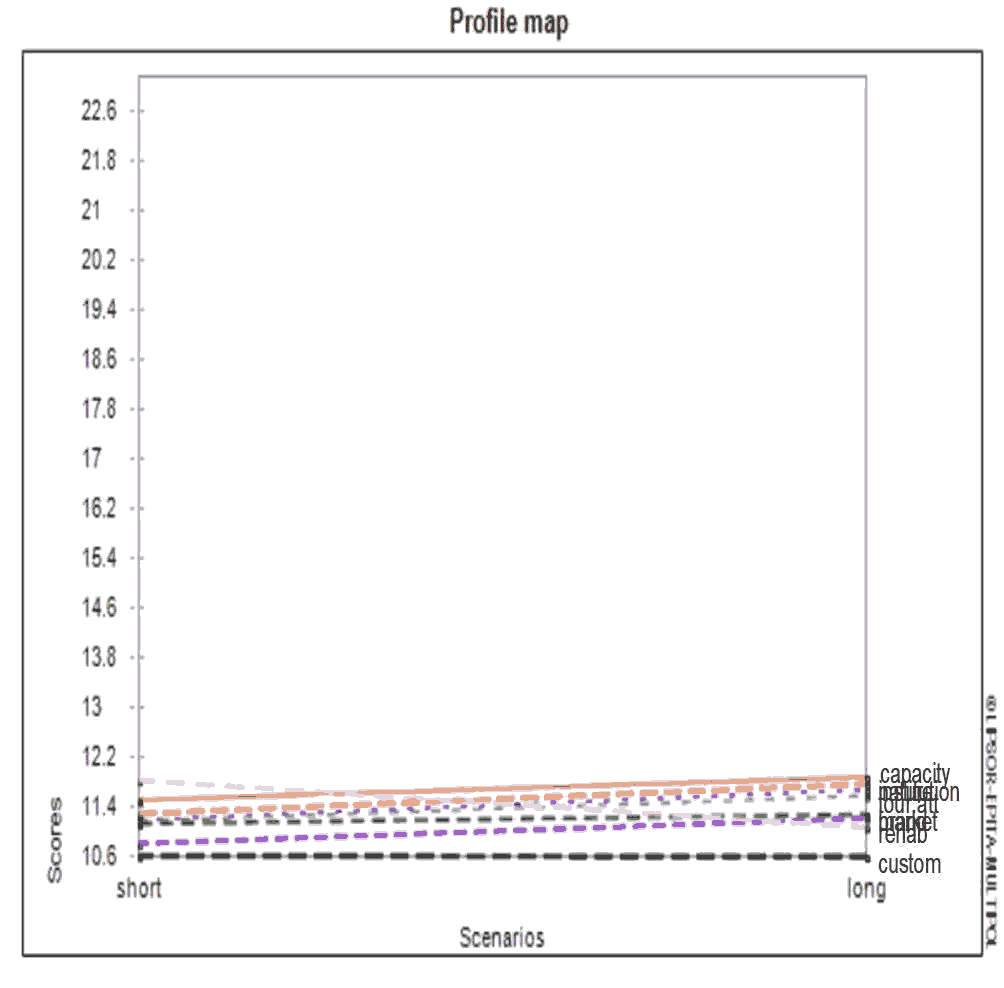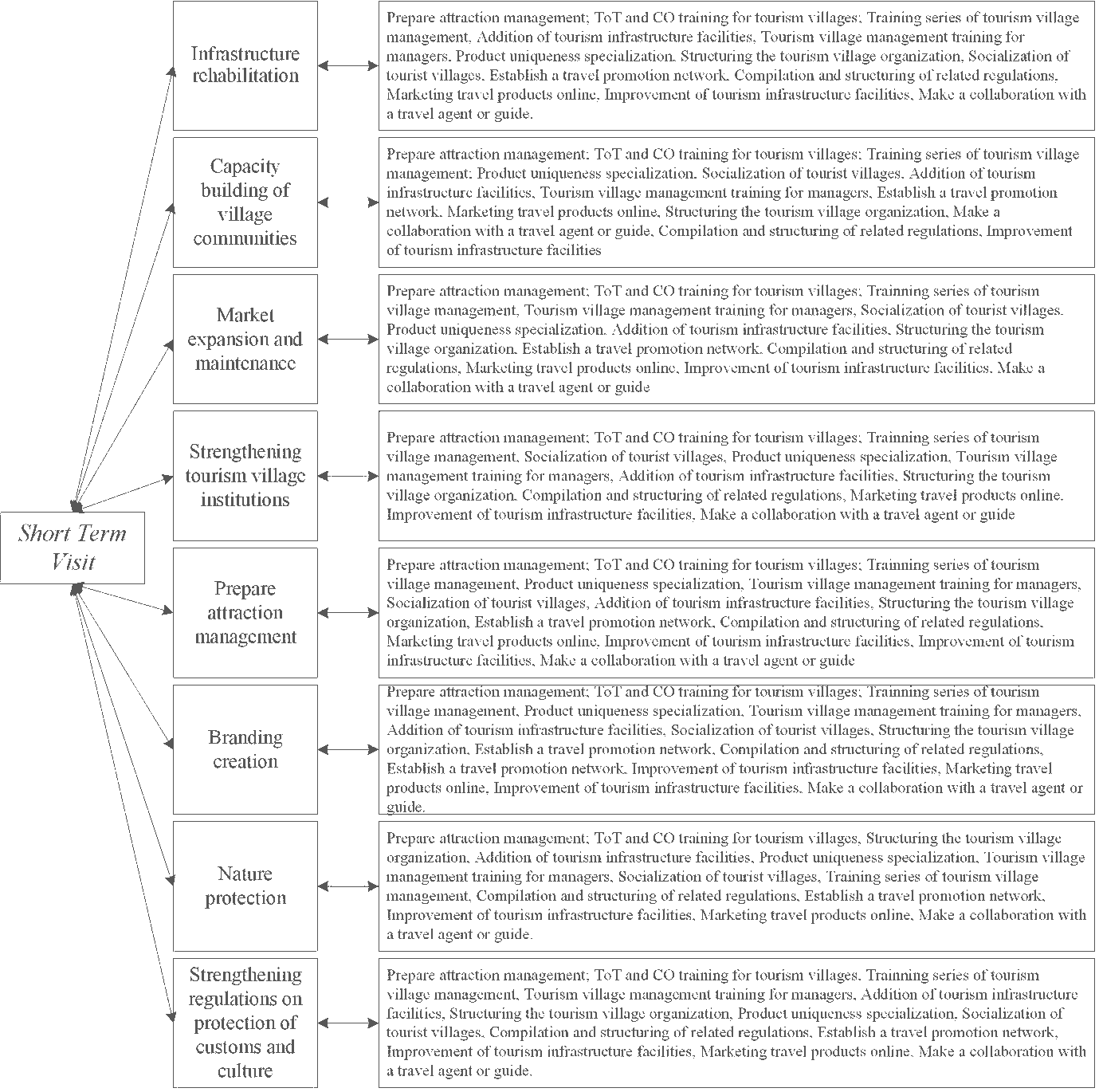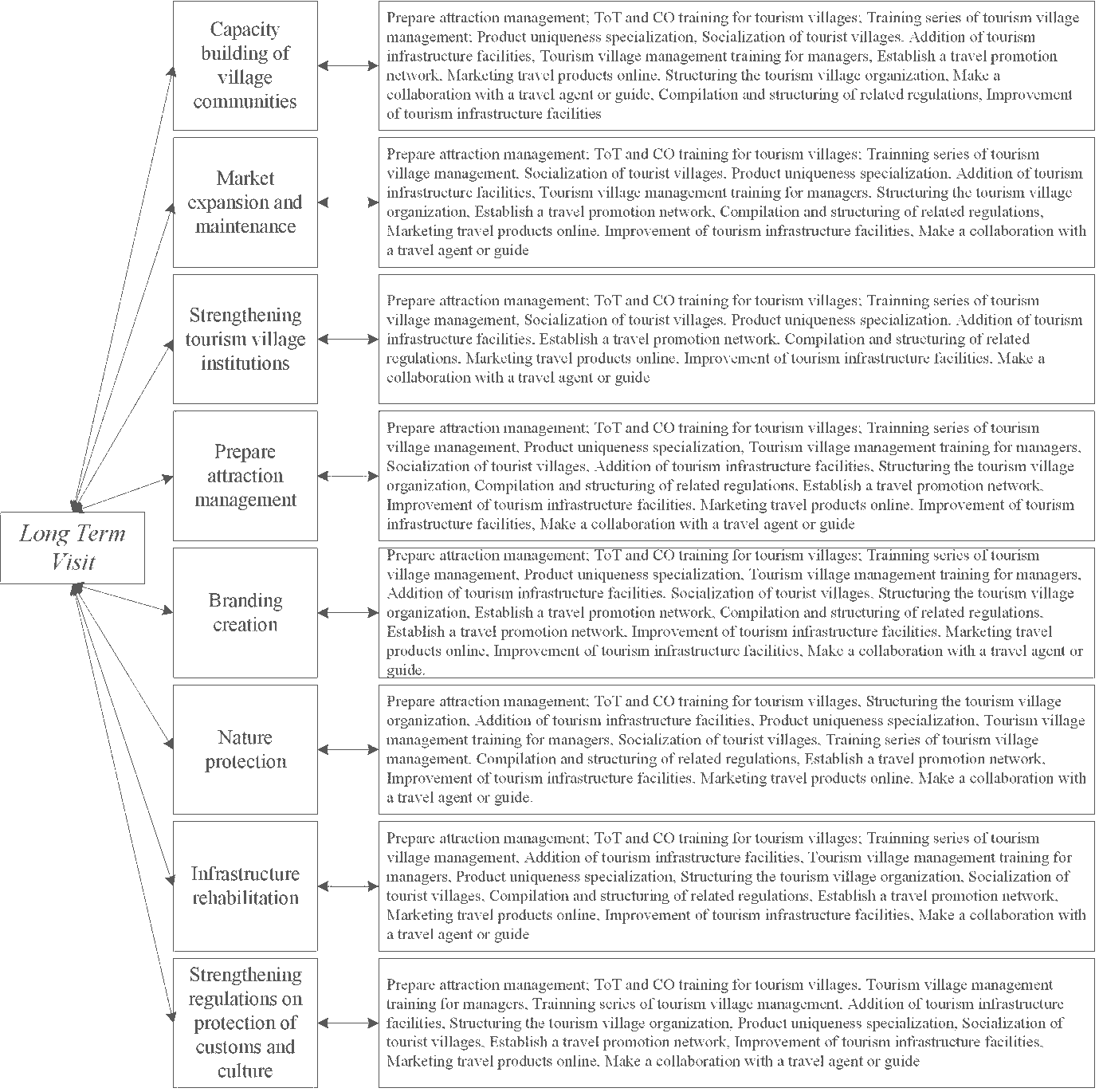Research Article: 2021 Vol: 20 Issue: 6S
Prospective Analysis in Determining Community-Based Sustainable Tourism Development Policies in Penglipuran Tourism Village, Bali
Ida Bagus Made Sutresna, Udayana University
Ida Ayu Nyoman Saskara, Udayana University
I Made Suyana Utama, Udayana University
Ni Putu Wiwin Setyari, Udayana University
Abstract
The success of Bali tourism has become a legend in itself when it comes to international tourism. However, there are many very basic problems in the development of tourism in Bali that threaten the sustainability of the development itself. Penglipuran Tourism Village, is one of the tourism objects that physically has a strong concern for the environment, or eco-tourism which is community-based. Indeed, so far, Penglipuran Village has been able to be managed and developed into a role model for a tourism village, but it is necessary to be aware of the negative impact of the massively developing tourism. Tourism can damage the joints of rural life. The purpose of this study was to analyze the scenario and hierarchy policy as a basis for formulating recommendations and strategies for the sustainability of the development of Penglipuran Tourism Village. This study seeks to analyze a policy that is currently being implemented and to be used as a basis in developing further strategies in the future, so that the analysis used is the MULTIPOL prospective analysis. The data were collected through a FGD involving relevant stakeholders and experts. It was found that the scenario in the sustainable development of Penglipuran Tourism Village was differentiated into a short term visit and a long term visit. In the short term visit scenario, the main policy that can be carried out is the improvement or improvement of facilities, while in the long term visit scenario.
Keywords
Tourism Village, Policy, Sustainable Tourism, CBT, Multi Policy
Introduction
Overall tourism in Bali has a very ideal anatomy (Yoety, 1996), because it is supported by various factors, such as the environment, culture, human resources, the social life of the local community. However, there are many very basic problems in the development of tourism in Bali that threaten the sustainability of the development itself. These problems include, among others, economic and socio-cultural and environmental aspects so that a good management pattern is needed (Yoety, 2001).
From an economic point of view, there are also many opinions that say that the benefits of tourism are disproportionately distributed. This inequity can be seen in the distribution between layers of society (vertical inequity) and between regions (spatial inequity). This can happen because some people have not felt the economic benefits of tourism, besides that there is a relationship between two or more parties who have or feel they have different goals (Nurlaila, 2014).
Penglipuran Traditional Village, is one of the tourism objects that physically have a strong concern for the environment, or eco-tourism which is community-based. Penglipuran Village is one of the most well-known tourist villages in Bali, where the focus of tourism development is Community-Based Tourism (CBT) (Rasmen Adi, 2017).
The role of the community plays a role that is no less important when compared to other stakeholders, but what needs to be a common concern is how to synergize all the interests of stakeholders, so that the development of a Tourism Village is prolonged and of course able to overcome differences in interests that can lead to conflicts. With the appointment of Panglipuran Village as a Tourism Village and as close as it has attracted the attention of the World because it is able to maintain its culture, it is proven from being designated as one of the three (3) cleanest villages in the World in February 2019. But because Tourism Village is a source of income for the actors in it with their different interests such as for example the village wants to maintain its culture, while tourism actors want to make a profit,
A tourist village is one form of implementing community-based and sustainable tourism development. In addition, the existence of a tourist village has made tourism products more valuable in rural culture so that the development of a tourist village with cultural value does not destroy it. Penglipuran Village is one of the most well-known tourist villages in Bali, where the focus of tourism development is Community Based Tourism (CBT). Penglipuran Tourism Village is one of the tourism objects that physically have a strong concern for the environment, or eco-tourism which is community-based. Indeed, so far, Penglipuran Village has been able to be managed and developed into a role model for a tourism village, but it is necessary to be aware of the negative impact of tourism that is developing massively. Tourism can damage the joints of rural life. So it is very important to conduct research on the involvement of local communities in the development of tourist villages based on local community participation. In addition, it is necessary to design a strategy that can increase the acceleration of the development of a tourism village that is able to embrace all stakeholders so that they can play a strategic role in the development of a tourist village. Related parties can participate in enhancing the competence of local communities for the empowerment of local communities.
The purpose of this study was to analyze the scenario and hierarchy policy as a basis for formulating recommendations and strategies for the sustainability of the development of Penglipuran Tourism Village. So it is very important to conduct research on the involvement of local communities in the development of tourist villages based on local community participation. In addition, it is necessary to design a strategy that can increase the acceleration of the development of a tourism village that is able to embrace all stakeholders so that they can play a strategic role in the development of a tourist village. Related parties can participate in enhancing the competence of local communities for empowering local communities. The purpose of this study was to analyze the scenario and hierarchy policy as a basis for formulating recommendations and strategies for the sustainability of the development of Penglipuran Tourism Village. So, it is very important to conduct research on the involvement of local communities in the development of tourist villages based on local community participation. In addition, it is necessary to design a strategy that can increase the acceleration of the development of a tourism village that is able to embrace all stakeholders so that they can play a strategic role in the development of a tourist village. Related parties can participate in enhancing the competence of local communities for the empowerment of local communities. The purpose of this study was to analyze the scenario and hierarchy policy as a basis for formulating recommendations and strategies for the sustainability of the development of Penglipuran Tourism Village. It is necessary to design a strategy that can increase the acceleration of the development of a tourist village that is able to embrace all stakeholders so that they can play a strategic role in the development of a tourist village. Related parties can participate in enhancing the competence of local communities for the empowerment of local communities. The purpose of this study was to analyze the scenario and hierarchy policy as a basis for formulating recommendations and strategies for the sustainability of the development of Penglipuran Tourism Village. It is necessary to design a strategy that can increase the acceleration of the development of a tourist village that is able to embrace all stakeholders so that they can play a strategic role in the development of a tourist village. Related parties can participate in enhancing the competence of local communities for the empowerment of local communities. The purpose of this study was to analyze the scenario and hierarchy policy as a basis for formulating recommendations and strategies for the sustainability of the development of Penglipuran Tourism Village.
Literature Review
Sustainable Tourism Development
The definition of sustainable tourism development can have multiple meanings. People from many different fields use different terms in different contexts and they have different concepts, biases and approaches (Heinen & Sharpley, 2000). The WTO defines sustainable tourism development as development that meets the needs of today's tourists, while protecting and encouraging opportunities for the future. In this case, sustainable tourism development policies focus on the use of natural resources and the use of human resources for the long term (Sharpley, 2000).
Aronsson (2000) tries to convey several main ideas about the interpretation of sustainable tourism development, namely: 1) sustainable tourism development must be able to overcome the problem of environmental waste and have an ecological perspective; 2) sustainable tourism development shows its alignment with small-scale development and local community-based local; 3) sustainable tourism development places tourist destinations as beneficiaries of tourism, not necessarily exploiting the local area to achieve them; 4) sustainable tourism development emphasizes cultural sustainability, in this case related to efforts to build and maintain traditional buildings and cultural heritage in tourist destinations.
Sustainable tourism development or Sustainable Tourism Development according to Yaman & Mohd (2004) is characterized by four conditions, namely: 1) community members must participate in the tourism planning and development process, 2) education for hosts, industry players and visitors/tourists, 3) quality wildlife habitat, energy use and microclimate must be understood and supported, 4) investment in alternative forms of transport.
Community Based Tourism
Community Based Development is a concept that emphasizes empowering communities to better understand the values and assets they have, such as culture, customs, culinary cuisine, and lifestyle. In the context of tourism development, the community must independently mobilize assets and these values become the main attraction for the tourist experience of tourists.
CBT was born from a community development strategy using tourism as a tool to strengthen the capacity of rural/local community organizations. In the application of the CBT concept in tourist villages, a number of aspects are taken into consideration in the formulation of community-based tourism models, namely social, cultural, cultural potential, and level of community participation (Muallisin, 2007).
Tourism and People's Economic Empowerment
Community empowerment is a new paradigm in development (Saskara & Marhaeni, 2017). In line with the development of tourism activities, efforts have been made to develop and develop tourism with the main objective of economic and social development in tourist areas (Egbali et al., 2010). With Indonesia's diverse natural conditions, it is a viable tourism potential that needs to be utilized in improving the country's economy and society. Tourism has proven to be able to rapidly improve the Indonesian economy (Soebagyo, 2012).
A study by Ramsar & UNWTO (2012) which discusses people's perceptions of the impact of tourism activities and community participation in tourism activities results that tourism activities affect the quality of local communities and there is a significant relationship between the quality of life of local communities and their participation in tourism activities. The social structure of local communities has a major problem in its ability to positively absorb the different norms and values brought by tourists (Mansfeld, 1992).
Mason (2003) explains that the impact of tourism is divided into three aspects, namely the impact on the economy, socio-culture and the environment which can be negative or positive. The scoping of the impact of tourism activities based on Peter Mason's theory is the theoretical basis used in this research. With the existence of tourism activities in Penglipuran village, it should have a positive impact on the economic conditions of the community (Ramsar & UNWTO, 2012) so that people can meet their needs.
Tourism Village
Tourism village is one of form of rural tourism that provides many benefits in developing existing rural resources (Wijaya et al., 2020). According to Muliawan (2008), the principle of developing a tourism village is one of the alternative tourism products that can provide encouragement for sustainable rural development. The components of tourism village development according to Muliawan (2008) include: tourist attractions and activities; accommodation; institutions and human resources; other tourism support facilities; other infrastructure; transportation; natural environmental and socio-cultural resources; Public; as well as a tourist market.
Method
This study seeks to analyze a policy that is currently being implemented and to be used as a basis in developing further strategies in the future. The policy referred to is the policy for the management and development of a tourism village, which in this case is located in Penglipuran Tourism Village. The aim is to ensure the sustainability of tourism in Penglipuran Tourism Village. The main collection technique in this research is through FGD (Focus Group Discussion). FGD was held to obtain information by presenting competent people or stakeholders related to the management and development of Penglipuran Tourism Village.
In the management and development of the Tourism Village, it is necessary to study the most appropriate policies in ensuring the sustainability of tourism activities in Penglipuran Tourism Village. Policy analysis on the management and development of tourism villages using the MULTIPOL model.
MULTIPOL is a multicreteria-based policy analysis tool that uses scores and weights. MULTIPOL integrates a participatory approach through stakeholder involvement into multicreteria assessments. MULTIPOL also evaluates action options or program alternatives not only for the criteria used, but also for the interaction of three components, namely action, policy, and scenarios, as shown in Figure 1. The interaction of these three components produces two types of evaluation in MULTIPOL, namely (Stratigea et al., 2013 in Fauzi, 2019);
1) Evaluation based on "Action to Policy" (eg program against policy). This evaluation determines what program is right for each policy so as to produce a hierarchy of impacts of the program (action) on the policy.
2) Policies to Scenario-based evaluation, this evaluation determines what policies are appropriate for a particular scenario, resulting in a hierarchy of policies and their impact for each scenario.
The three main components of MULTIPOL, namely (scenario, policy, and action) can be explained as follows.
(1) Scenario. Is a structured development that can be done in the future where the goals can be achieved.
(2) Policy. Is a strategy (also known as strategic path) needed to support the scenario. This policy can be related to macro, micro, sectoral aspects, as well as social, economic, political, institutional aspects and so on.
(3) Action. Also known as policy measures or ways to achieve goals, which are potential interventions aimed at implementing policies (policies).
Apart from the three main inputs, MULTIPOL requires input criteria that will be used when assessing scenarios, policies, and actions. In other words, filling in this component will be done through a matrix of the three inputs with predetermined criteria. The criteria describe the measurable aspects based on the assessment (judgment) of the stakeholders.
Result and Discussion
Overview of Penglipuran Tourism Village
The geographical location of Penglipuran Tourism Village is between 08° 08° 30° - 08° 31° 07° South Latitude and 115° 13° 43°-115° 27° 24° East Longitude. The air temperature ranges from 240 C with a humidity level of 28 and rainfall of 2,000-2,500 mm per year with an altitude of 500-625 meters above sea level. The land surface is relatively flat with a height difference ranging from 1-15 meters. The soil type is slightly yellowish red, with fertile conditions that can be planted with various kinds of plants, but the most suitable are coffee, salak, coconut and bamboo plants. The distance between Penglipuran and the District Government is 4 km. To the Regency Government 4 Km and the distance from the Central Government of Bali Province 45 km. Meanwhile, the distance to the market is 4 km, to the 4 km terminal, to the 60 km Port and 60 km to Ngurah Rai Airport. (Figure 2)
MULTIPOL Analysis Results
MULTIPOL is a multicriteria-based policy analysis tool (Fauzi, 2019). Based on the results of the FGD, scenarios, criteria, policies and actions can be prepared in relation to the development of tourist villages in Bali, as detailed in Table 1.
The following Table 2 presents the results of the MULTIPOL analysis based on the score for each policy and the average score, as well as the standard deviation obtained. The average score measures the overall performance of each action against the policy (or program against the policy), while the standard deviation value shows the sensitivity of each action to the policy (Stratigea et al., 2013).
| Table 1 Scenarios, Criteria, Policy, and Community-Based Sustainable Tourism Development Action in Penglipuran Village |
||
|---|---|---|
| A. | Scenarios | Code |
| 1. | Short Term Visit | short |
| 2. | Long Term Visit | long |
| B. | Criteria | Code |
| 1. | Increased economy and income | income |
| 2. | Increased community participation | anticipate |
| 3. | Improvement of manager competence | manager |
| 4. | Employment | employ |
| 5. | Development of micro businesses | micro |
| 6. | The growth of new business creativity | creative |
| 7. | Nature/environmental conservation | conservation |
| 8. | Infrastructure improvements | infra |
| 9. | Preservation of customs and culture | culture |
| C. | Policy | Code |
| 1. | Capacity building of village communities | capacity |
| 2. | Strengthening tourism village institutions | institution |
| 3. | Packaging of tourist attractions/attractions | tour.att |
| 4. | Branding creation | brand |
| 5. | Market expansion and maintenance | market |
| 6. | Nature protection | nature |
| 7. | Strengthening regulations on protection of customs and culture | custom |
| 8. | Infrastructure rehabilitation | rehab |
| D. | Action | Code |
| 1. | Socialization of tourist villages | socialization |
| 2. | ToT (Trainning of Trainer) and CO (Community Organizer) training for tourism villages | training |
| 3. | Trainning series of tourism village management (local guide, homestay, culinary/F&B, tourist village attractions) | serial.tr |
| 4. | Compilation and structuring of related regulations | regulation |
| 5. | Structuring the tourism village organization | organization |
| 6. | Prepare attraction management (village tourism attraction package packaging, prices, SOPs) | manage |
| 7. | Product uniqueness specialization (travel, crafts, arts, OVOP) | special |
| 8. | Establish a travel promotion network | network |
| 9. | Marketing travel products online | on line |
| 10. | Make a collaboration with a travel agent or guide | travel.ag |
| 11. | Improvement of tourism infrastructure facilities | im.infra |
| 12. | Addition of tourism infrastructure facilities | add.infra |
| 13. | Tourism village management training for managers | edu.mng |
| Table 2 Evaluation Based on Actions and Policy |
||||||||||||||
|---|---|---|---|---|---|---|---|---|---|---|---|---|---|---|
| Actions | Policy | Mean value | Standard Storage | Position | ||||||||||
| Capacity | Institution | Tour.att | Brand | Market | ||||||||||
| Socialization | 13.2 | 13.3 | 13 | 12.5 | 13.1 | 12.9 | 11.9 | 11.9 | 12.8 | 0.5 | 7 | |||
| Training | 14.5 | 14.4 | 14.6 | 14.4 | 14.6 | 13.7 | 13.6 | 13.2 | 14.1 | 0.5 | 12 | |||
| Serial.tr | 14 | 13.9 | 13.9 | 13.8 | 14.1 | 12.9 | 12.8 | 13.2 | 13.6 | 0.5 | 11 | |||
| Regulation | 10.3 | 11.3 | 11.2 | 11.3 | 11.4 | 12.7 | 11.6 | 11.5 | 11.4 | 0.6 | 4 | |||
| Organization | 10.8 | 12.2 | 12 | 12.4 | 12.7 | 13.3 | 12.7 | 12.5 | 12.3 | 0.7 | 6 | |||
| Manage | 14.8 | 14.9 | 14.8 | 14.6 | 14.9 | 14.8 | 14 | 14.1 | 14.6 | 0.3 | 13 | |||
| Special | 13.5 | 13.3 | 13.4 | 13.4 | 12.9 | 13.2 | 12.5 | 12.8 | 13.2 | 0.3 | 10 | |||
| Network | 12 | 12.3 | 12.1 | 12.1 | 12.4 | 12.1 | 11.3 | 11.9 | 12 | 0.3 | 5 | |||
| On line | 11.6 | 11.3 | 11.3 | 11.2 | 10.9 | 11 | 10.2 | 11 | 11.1 | 0.4 | 3 | |||
| Travel.ag | 10.4 | 9.7 | 10 | 9.9 | 9.4 | 9.5 | 9.8 | 9.9 | 9.9 | 0.3 | 1 | |||
| Im.infra | 10.3 | 10.7 | 10.6 | 10.8 | 10.4 | 11.8 | 10.9 | 10.9 | 10.9 | 0.6 | 2 | |||
| Add.infra | 13 | 13 | 12.9 | 13.1 | 12.9 | 13.3 | 12.8 | 13.1 | 13.1 | 0.3 | 8 | |||
| Edu .mng | 12.7 | 13.3 | 13.2 | 13.2 | 13.6 | 13.2 | 13.1 | 13.1 | 13.1 | 0.3 | 9 | |||
As can be seen in Table 2, the highest score was obtained in the activities of preparing attraction management, ToT training, and training series on tourism village management.
Furthermore, Figure 3 below presents the results of MULTIPOL in the form of a closeness map or the closeness between programs (actions) and policies (policies). Based on Figure 4, it is found that the policy to increase the capacity of rural communities is closer to marketing tourism products online and making cooperation with travel agents or guides. Furthermore, the infrastructure rehabilitation policy is close to the action to improve tourism infrastructure facilities and add tourism village management for managers. Meanwhile, natural protection policies and strengthening of customary and cultural protection regulations tend to be close to the formulation and structuring of related regulations and the structuring of tourism village organizations. While the policy of creating branding and packaging tourist attractions/tourist attractions is close to the series of trainning management of tourist villages, set up attraction management, specialize in product uniqueness, and form a tourism promotion network. Furthermore, for policies to strengthen tourism village institutions as well as expansion and maintenance of markets close to tourism village socialization activities, ToT and CO training, as well as training in tourism village management for managers.
MULTIPOL also produces a profile map that links the scores for each program (actions) with policies (policies).
As shown in Figure 4, the program preparing attraction management as well as training of ToT and CO socialization of tourism villages is superior in all types of policies. This is because preparing attraction management which includes packaging tourism village attraction packages, prices and SOPs are the main things that really need to be prepared for professional village management. Meanwhile, ToT and CO-based training are very much needed so that the community can participate and take the role of tourism village actors.
Furthermore, Table 3 and Figure 5 present the score for each policy against the scenario.
| Table 3 Score Policy Against Scenarios |
|||||
|---|---|---|---|---|---|
| Policies | Scenario | Mean value | Standard storage | Position | |
| Short term | Long term | ||||
| Capacity | 11.5 | 11.9 | 11.7 | 0.2 | 8 |
| Institution | 11.2 | 11.7 | 11.5 | 0.2 | 6 |
| Tour.att | 11.2 | 11.6 | 11.4 | 0.2 | 5 |
| Brand | 11.1 | 11.3 | 11.2 | 0.1 | 3 |
| Market | 11.3 | 11.8 | 11.6 | 0.2 | 7 |
| Nature | 10.8 | 11.2 | 11.1 | 0.2 | 2 |
| Custom | 10.6 | 10.6 | 10.6 | 0 | 1 |
| Rehab | 11.8 | 11.1 | 11.4 | 0.4 | 4 |
Based on Table 3 and Figure 5, it appears that the infrastructure rehabilitation policy is superior in the short term visit tourism village scenario, while the policy is to increase the capacity of rural communities, strengthen tourism village institutions, packaging tourist attractions, create branding, expand and maintain markets, and protect nature. has the highest value in the long term visit tourism village scenario. Meanwhile, the policy of strengthening the regulation of customary and cultural protection has the same value in both scenarios. When viewed from the average value of the two scenarios, the best position is obtained in the policy of increasing the capacity of the village community, followed by market and institutional policies.
Discussion
The overall results of the MULTIPOL analysis can be presented in the form of a potential policy path that can be achieved with a program that is suitable for certain policies and scenarios. Figure 6 and Figure 7 present potential policy pathways that can be pursued through various programs (actions) in accordance with the policy.
If tourism in Penglipuran Tourism Village will be directed at a short term visit, then the first policy that needs to be implemented is infrastructure rehabilitation. Generally, there are quite a lot of tours with a short term visit pattern. Meanwhile, if it is developed into a tourist village with a long term visit pattern, the first policy must be established, namely increasing the capacity of the village community.
Figure 6 shows that for the short term visit scenario, the first policy that needs to be implemented is infrastructure rehabilitation. The short term visit scenario means that tourists only take a short tour in Penglipuran Village, which is no more than a day. Because it is only done for a short time, the tourist expenditure in traveling to Penglipuran Tourism Village is certainly not as much as tourists who travel for more than a day, therefore, the short term visit scenario leads to a mass tourism pattern, where tourists are in large numbers. When a relatively large number of tourists visit at the same time, of course it requires more facilities in certain matters. These facilities include the availability of parking lots and special tourist spots in a wider area.
The next policy that also needs attention in the short term visit scenario is increasing the capacity of village communities. When tourists travel in a relatively short period of time, it is hoped that tourists will still get a good impression so that they will come back again. This is where the important role of the community's ability to impress and serve memorable tourist attractions for tourists.
Likewise in the long term visit scenario, increasing the capacity of the village community is also an important policy. Moreover, we realize that community participation plays a very vital role in shaping the image of a tourist village.
Market expansion and maintenance policies are also important policies in the long term visit scenario. The existing market needs to be maintained, so that if tourists have felt the impression of the atmosphere of life by traveling for more than a day, tourists will be close to community activities and feel like repeating their visit.
Conclusion
The scenarios for the sustainability of the development of Penglipuran Tourism Village are divided into short term visits and long term visits. In the short term visit scenario, the first policy that needs to be implemented is to focus on improving infrastructure. The first scenario tends to lead to mass tourism, so it requires a large number of facilities, such as the availability of parking space. Whereas in the long term visit scenario, it is more focused on policies to increase community capacity, where the community and managers are required to be creative so that for a longer time tourists have attractive and memorable activities so that they will give a good image and make tourists interested in returning.
References
- Aronsson, L. (2000). The development of sustainable tourism. London: Continum.
- Egbali, N., Bakhshandea, A., Khalil, S., & Ali, S. (2010). Investigation challenges and guidelines for the development of rural tourism– A case study of rural Semnan Province. South Asian Journal of Tourism and Heritage, 3(2), 61–75.
- Fauzi, A. (2019). Sustainability analysis techniques. Jakarta: Gramedia.
- Mansfeld, Y. (1992). From motivation to actual marketing. Annals of Tourism Research, 19, 399-419.
- Mason, P. (2003). Tourism impacts, planning and management. Amsterdam: Butterworth Heinemann.
- Muallisin, I. (2007). Community-based tourism development model in Yogyakarta City. Research Journal of Bappeda Yogyakarta City, 2, December 2007
- Muliawan, J.U. (2008). Home industry management business opportunities in the middle of crisis. Yogyakarta: Banyu Media.
- Nurlaila (2014). Overview of conflicts of interest in: Dieng Plateu tourism destinations, ministry of tourism and creative economy. JDP, 1(1).
- Ramsar & UNWTO. (2012). Destination wetlands: Supporting sustainable tourism. Secretariat of the Ramsar Convention on Wetlands, Gland, Switzerland, & World Tourism Organization (UNWTO), Madrid, Spain.
- Rasmen-Adi, I.N. (2017). The role of the government, the role of traditional villages, and social capital in realizing community-based sustainable tourism in Penglipuran Village, Bangli Regency. Dissertation. Denpasar: Udayana University.
- Saskara, I.A.N., & Marhaeni, A.A.I.N. (2017). The role of social capital and business strategies in developing the business of banten to increase Balinese women's employment. Journal of Comparative Asian Development, 16(1), 68-86. http://dx.doi.org/10.1080/15339114.2017.1292930
- Sharpley, R. (2000). Tourism and sustainable development: Exploring the theoretical divice. Journal of Sustainable Tourism.
- Soebagyo (2012). Tourism development strategy in Indonesia. Journal of Liquidity Research, 1(2), 153-158.
- Wijaya, P.Y., Kawiana, I.G.P., Suasih, N.N.R., Hartati, P.S., & Sumadi, N.K. (2020). SWOT and MICMAC analysis to determine the development strategy and sustainability of the Bongkasa Pertiwi Tourism Village, Bali Province, Indonesia. Decision Science Letters, 9(2020), 439-452.
- Yemen, A.R., & Mohd, A. (2004). Community based eco-tourism: New proposition for sustainable development and environment conversation in Malaysia. Journal of Applied Sciences, 4.
- Yoeti, O.A. (2001). Introduction to tourism science, Revised Edition. Bandung: Space Publisher.
- Yoeti, O.A. (1996). Tourism anatomy. Bandung: Space Publisher.
